Toad in the hole

This week: Buddleja; Kaleidoscope of Butterflies ; Weed free; Toad in the hole; Chlorosis crisis; Call the Fire Brigade;
Buddleja
I like exploring gardens and garden centres, trying seeds and cuttings and generally experimenting. One of my experiments is with Buddleja.
This is a genus of around 100 flowering shrubs, found across Asia, Africa and the Americas. From these there are approaching 200 named cultivars and hybrids.
It is a temperate rather than sub-tropical shrub, well known in the UK for lining the embankments of railway tracks.
One of the best known varieties in Europe is Buddleja Davidii, commonly called the Butterfly Bush. Having a high nectar content, it is generally highly attractive to butterflies and other insects.

The plant was discovered growing in central China by a the French missionary and explorer, Father Armand David who sent samples back to Europe. There are now more than ten named cultivars of this variety, in different colours.
I have two, a brilliant white and a royal purple. The wet spring has benefited them, as they have more flowers this year than ever before.
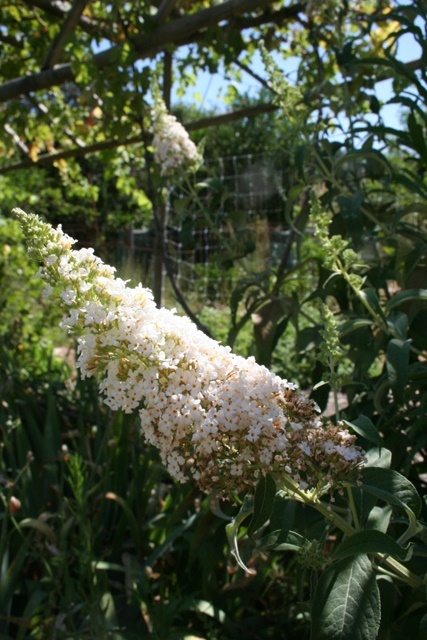
But the thing which is most noticeable is that they are almost completely bereft of butterflies.

A close examination shows other insects are feeding on the nectar, but the butterflies around here prefer Lavender and Lantana camara, both of which I also have in the garden. The more I observe the less I understand!

Kaleidoscope of Butterflies
What is the collective noun for a group of butterflies? Well there are actually four; “Kaleidoscope of Butterflies”; “Rabble of Butterflies”; “Rainbow of Butterflies”; “Swarm of Butterflies”. I prefer a ‘kaleidoscope‘.
At the end of the lane that leads to my Dol house there is a small commercial stand of lavender. For the past fortnight every time I have passed there have been thick clouds of butterflies feeding on the nectar.

From tiny Common Blues to the large, striking swallow tails and everything in between can be seen on these lavender plants.

Too many to count, but certainly numbering in the hundreds, they swirl around you in a cloud as you take photographs.
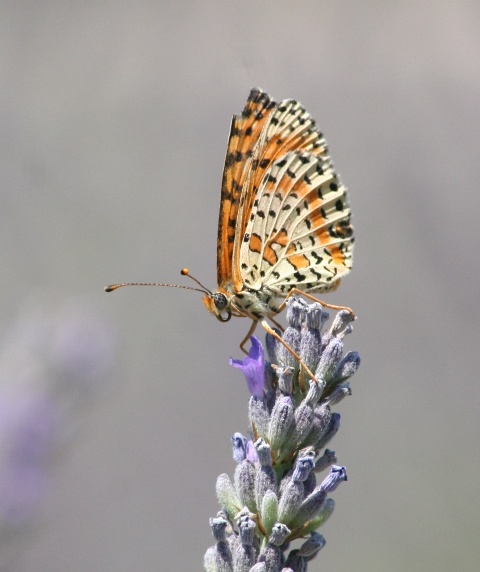
It’s hard to photograph a cloud of butterflies.
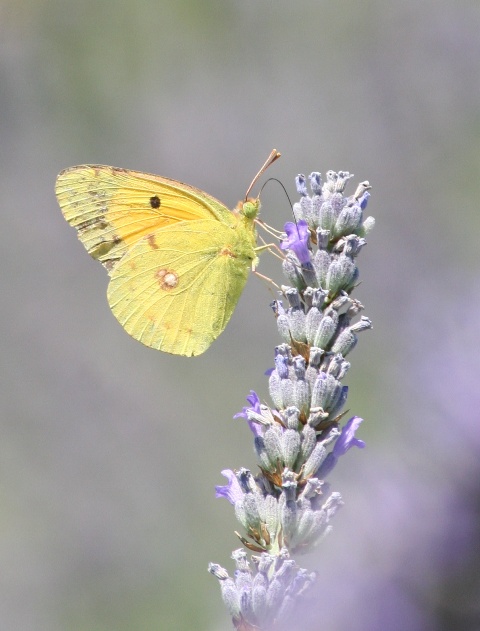
So back to my Buddleja. Is the nectar an acquired taste, and the locals have yet to acquire it? Is it that there is more plentiful food elsewhere?
The Lavender will be harvested soon and the flowers turned into essential oils, but the Buddleja will be in flower until the end of Autumn.
There are beetles which are feeding, but I planted it as one of a range of plants that would encourage butterflies and other pollinators into the garden, and in this I have conspicuously failed.
The showy flower spikes do look nice, but it was not just visual appeal that I wanted it for.
It would be nice to try some of the others. This photo is from the Bakker catalogue, a European plant supplier.

They suggest planting three different colours together to create a stunning display like this. I know of course that these carefully chosen, manipulated and pruned examples are beyond anything I could grow, but it does look stunning.
I would be happy to get my hands on just two hybrids varieties, Buddleias: ‘Sungold’ (Buddleja x weyeriana) and Buddleja davidii “Flower Power”.
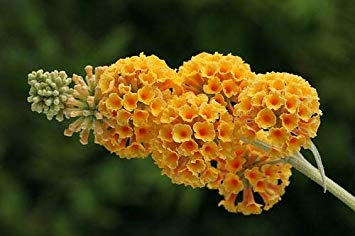
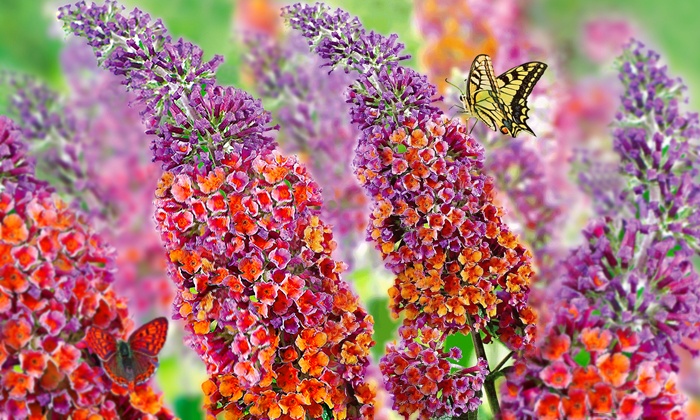
Weed free – Well almost…
I have been up shortly after 5am every day this week and could be seen by any passing satellite working in the citrus orchard, before the sun was high enough to illuminate my Dol house.
Another failed experiment this year was with the local plant Yellow Lucerne, Medicago falcata. I discovered last year that this plant seemed to thrive in the poor soil of the citrus orchard, and out competed all the other weeds.
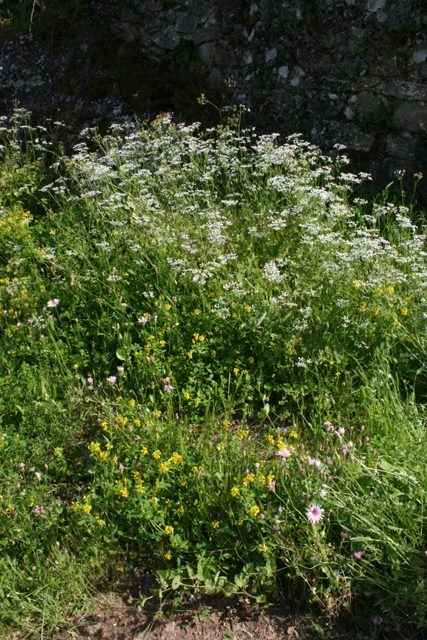
It readily set seed, in large quantities, which I gathered and then spread around the orchard, hoping for a bumper crop this year. It didn’t happen. In fact I think I had fewer plants than last year which given the warm, wet spring, was disappointing.
As it and other plants have died back with the extreme heat of the past couple of weeks, I started in one corner of the Citrus orchard and began clearing away all the dead material. It has taken me five mornings, working until around 08:30, by which time it is too hot to be in the sun, but on Saturday I cleared away the last few sprouts.
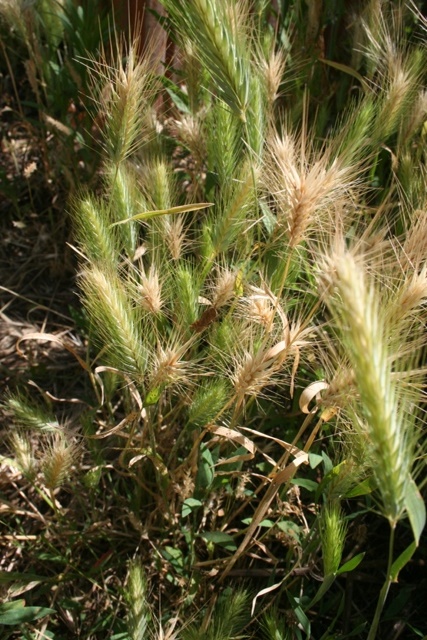
There are still things growing, but I need some rain to soften the surface so I can hoe the tops off. I could bring the rotorvator in to turn it now, but all that will do is open the soil weed seed bank again.
The soil being a clay loam, has cracked and hardened into a concrete like mass. I can’t get my dutch hoe blade in, so it will just have to wait.

I took some 360º photographs from the centre of the orchard. These show the steel frames around the citrus trees, with a couple of the new saplings still having their shade netting up, and the cover over the Grapefruit which has been scorched by the sun.
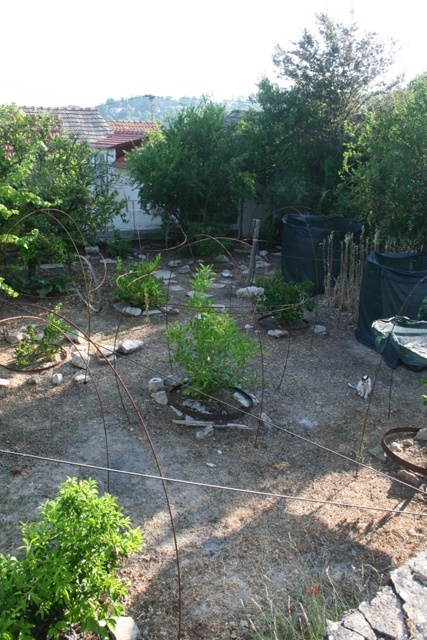
It has taken much longer than normal to upload the photograph, but it now seems to be working, so try moving around and zooming in and out.
Toad in the hole
I am irrigating everything at the moment, night and morning, but even so I have lost a cherry and a damson sapling. These were only planted this spring, from bare rooted stock.
I suspect that they did not have the chance to establish a root system to uptake water, and the extremes of weather we have experienced finished them off.
I have a nursery area where I generally keep plants, shrubs and saplings in large pots before planting them in their final position. Arriving in mid-winter, I put these two straight into position in the soil. A mistake I think.
I will re-order the varieties in the winter, but this time pot them up for a year, so they can develop the fine roots they need, before planting them out.
Every evening I carry over 60 litres of water in a watering can to spot water plants while the irrigation system is running. The irrigation water is fed in underground pipes to where it is needed and then in micro-bore tubing with drippers, to individual plants and trees.
This delivers exactly the right amount of water in a controlled manner, to where it is needed.
I buried all the pipework because my experience is that the strong summer sun and high UV rots surface pipes in a single year. But this does mean that I have to watch for the tell tale signs that something has gone wrong.
Under my old Mandarin tree I found just such a small tell-tale hole on Saturday. I turned the system on just to make sure, and within seconds water was starting to bubble up, so switched it off again.
As I looked down into the hole, a pair of green eyes were looking up at me. One of my many garden toads.

I have large numbers of these green and pink toads, Bufo viridis. They certainly run into the dozens. They can be seen hopping all over at this time of year, with lots of evidence of road kill sadly.
Toads are a gardeners friend, eating insects and pests. Almost completely nocturnal, a walk around at night time with a torch reveals lots of eyes. With an evenly camouflaged skin of green and pink, they blend very nicely into the floor of the orchard.
I’m not sure how long I have had this leak, probably for a day or two at the most, but clearly he had found a cool, damp spot that was to his liking, so I left him and waited for the soil to dry out before completing the pipe repair.
Chlorosis crisis
This week I had a close look and there are now dead branches from top to bottom of the Mandarin tree. There are few new leaves and several of those present are yellow.
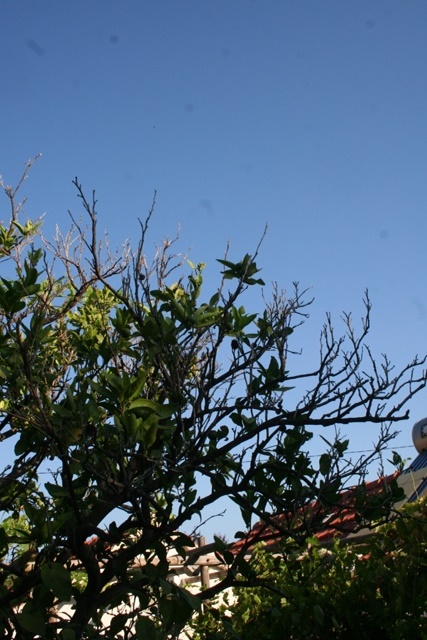
The only remaining big, old tree in the citrus orchard is this Mandarin. It has fruited well every year I have been here, but last year I noticed that there were a number of small dead branches at the lower extremities.
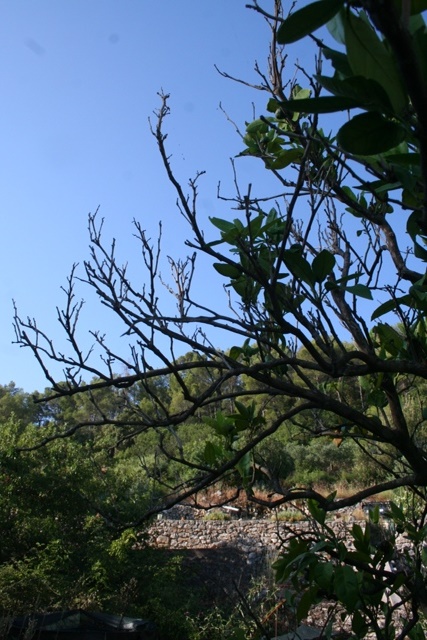
Although this is not my first adventure in citrus growing, having had oranges and lemons in both Spain and Abu Dhabi, I am by no means an expert. I would class my level of experience as “well meaning amateur”.
However as my knowledge of the soil that I have increases, plus general horticultural knowledge, I suspect that this is Chlorosis because of yellowing leaves.

Citrus trees have been growing in the Mediterranean basin for Millennia. There is a huge amount of experience to be tapped into, but not all of it is helpful in this case. The Mediterranean Garden Society has a dedicated page on growing citrus.
However the tree is not covered with yellow leaves.. I suspect something else is at play here, but I don’t know what. I have asked a question on the MGS forum and am waiting for others experience.
When we had the big freeze over New Year 2017 , this was one of the citrus which lost every leaf. Other citrus, including my mature orange were killed by the cold. What I wonder is if this has affected the tree and the die-back of branches at every extremity is the result.
There are fruits on it, not a bumper crop this year, but certainly an adequate amount. With a limestone soil, it is already mineral deficient, and Chlorosis is s a symptom of iron deficiency.

There are remedies, things like applying chelated iron, but in a calcareous soil with a high pH, like mine, even this kind of mineral rapidly becomes unavailable to the plant.
I think I need to get my tree stethoscope out and do some intensive monitoring of its health. I also need to prune off all the dead branches too!
Call the Fire Brigade
Where does time go? I opened my flying log book this week and have been flying aircraft since 1986 and helicopters since 1989. That is 33 years and some 3,700 hours, plus a commercial pilots licence.
More recently I started flying UAS – unmanned aerial systems, or drones. They are considerably cheaper than helicopters and whilst they cannot replace a helicopter, there are certainly a lot of areas where they can do the same observation role as a helicopter does.

Here on the island and indeed across most of Croatia, the fire and rescue services are volunteer organisations. Only in the largest cities are the Vatrogasci full time. There are not many large cities in Croatia.
Fire and rescue services are a municipal managed resource and with four services on the island, my local Vatrogasci is in Stari Grad. They are known by the initials DVD.
That threw me when I first moved here. I thought I knew what DVD’s were – circular discs that are used to store data – but it actually means DOBROVOLJNO VATROGASNO DRUŠTVO, Volunteer Fire Society.

Other than the two senior officers, everyone else is a volunteer. There are over 80 trained firefighters. They have eight vehicles like their Mercedes Unimog, but including an ancient, even historic 1983 TAM 75T5.

TAM were a Slovenian company who made trucks in Maribor between 1941 and 1996 After the break up of Yugoslavia, the company continued making busses and truck chassis and still produces them under the TAM marque..
I have got to know the chief and deputy chief and helped them to apply for a European EENA programme for a fire drone a couple of years ago. The application wasn’t successful, but this Spring the chief asked me to call in to advise on using a fire drone that the county had provided.
I left the fire station, with the UAS and as the volunteer pilot.
I have seen so often local authorities providing resources, but not all the things that are actually needed. In this case, there was a very powerful commercial UAS, with a thermal and video camera, capable of all kinds of autonomous and pre-planned operations, but no means of carrying it safely.
Using one of my surplus shipping boxes, I created a rugged base and then made a custom built foam insert for the aircraft.
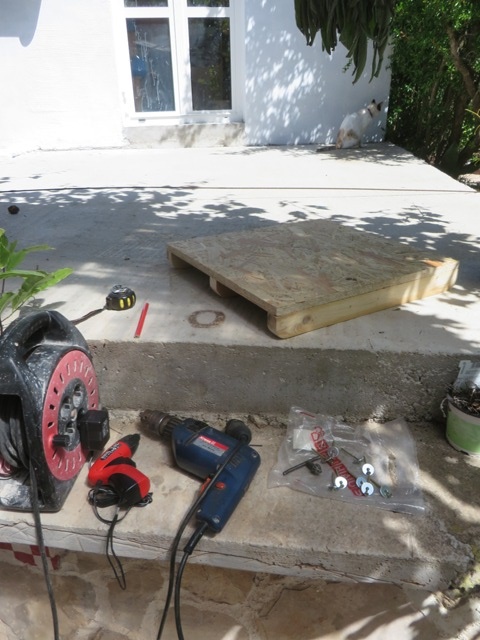

I have written in the past about how tins of expanding foam are a “go-to” resource here for everything you can think of in the building line. I used my knowledge of the material to create a custom fit foam liner inside the box to house the aircraft.

With the first layer in place, I then made a foam box to fit over the UAS and hold it in place.
If ever you have to send something fragile in a parcel, I would recommend you make your own foam liner. It really is an innovative use of the material, but one which works.
Around Europe, there are a growing number of countries who are adopting the Battenberg Markings for emergency vehicles.

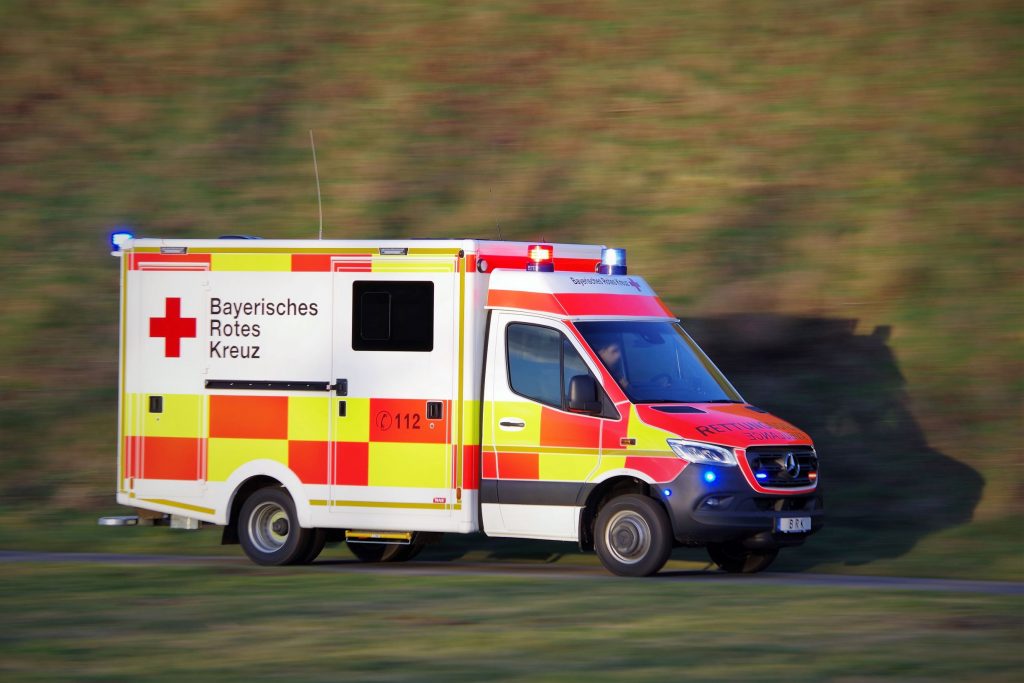
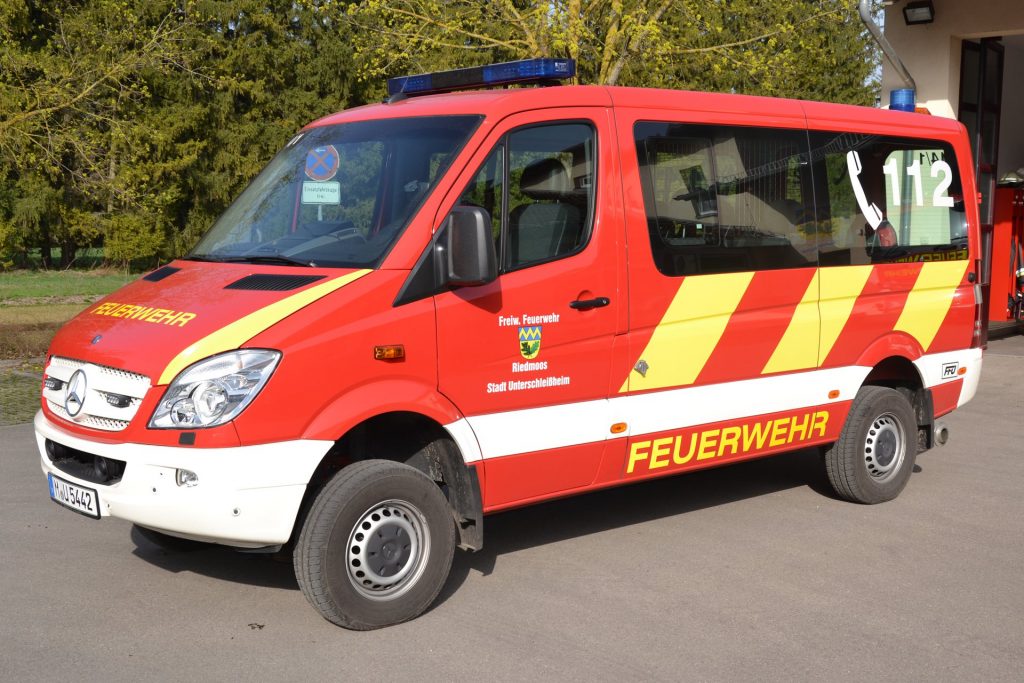
These were developed in the UK for vehicle conspicuity, especially at incidents. They include rear chevrons because of the prevalence of distracted drivers running into the rear of parked vehicles.
From Finland in the north through Germany, to Austria gradually various emergency vehicles are appearing with the battenberg reflective foils.
As we approach the peak fire season, I have marked and painted up the UAS transport box this week in standard fire & rescue colours. I have been waiting for some promised reflective markings to come from the UK, but they still have not arrived. I want to make the box conspicuous, so it doesn’t get left behind….
First job was to measure the box then divide it up and mask off the area to be painted.
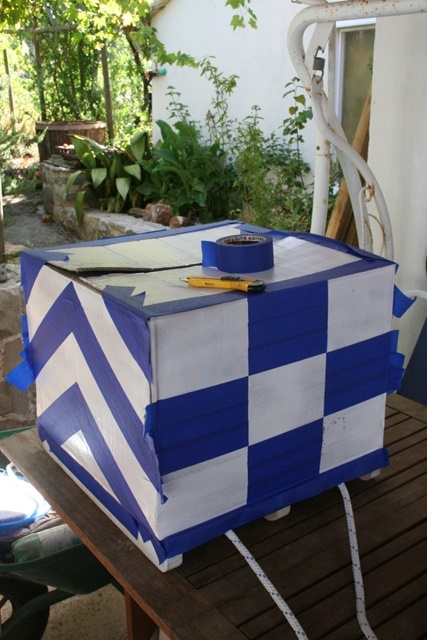
I applied gloss red paint first with a spray can, then after allowing it to dry, masked the new red paint and sprayed the yellow.
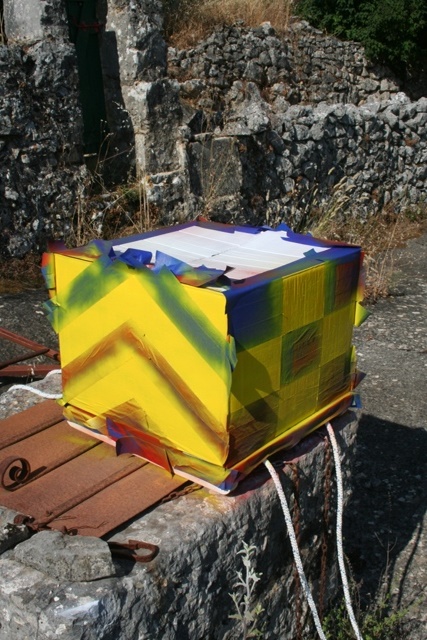
Finally I sprayed on a coat a lacquer to seal it.
I also made a working top for the box, somewhere to assemble and check the drone, change batteries and the like.
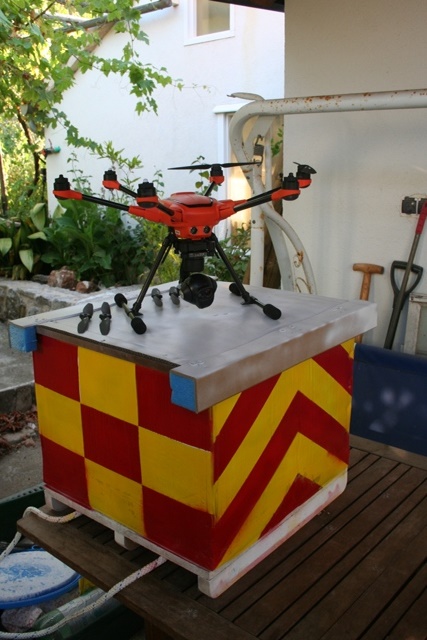
There are not many calls a year, but I have also created standard operating procedures so they can get the best out of their new piece of equipment.
All outdoor fires are banned on the island from 1st May to 1st October because the risk of a devastating forest fire is so great. With a wet spring the forest underbrush has grown considerably and is now tinder dry. But we are now ready for the call. NRC
4 Responses
Mike Speakman
Love the drone. I guess you know the UK are imposing very severe restrictions on their use and everyone who has one has to register for a fee. As usual it will only be the honest owners who are penalised.
Elizabeth
Hi Norman, great to get your news, as always. The local fire service would be lost without your wonderful assistance.
Now that everything is dry, why are you removing the dead plant material? Wouldn’t it be better to chop it down but leave it in place? This would allow it to protect the soil from baking and run off when it rains, retain any potential moisture from dew etc, provide habitats for your wildlife, and allowed rot down in place it would improve soil structure courtesy of worm action. It doesn’t look so neat though.
On the subject of Buddleia, they are regarded as a nuisance here in the UK as they are very invasive and can be found invading everything. They are great for butterflies but need to be dead headed to prevent setting seed and spreading unhindered.
Maybe the butterflies will come to visit when the lavender is finished.
Look forward to your next instalment.
Marcy
Love the pictures and the plant education. Bees and butterflies will save us all in the end. The drones are awesome. My son is a drone pilot and we have created training courses, etc. for drone pilots for the entertainment industry. He has about 4 large drones that have been used for various things. Good for you helping these people out. Always grateful to be part of your blog.Cheers
essential oil blends
Excellent post. Keep writing such kind of information on your site.
Im really impressed by it.
Hello there, You’ve performed an excellent job. I’ll certainly
digg it and personally suggest to my friends.
I am confident they’ll be benefited from this web site.